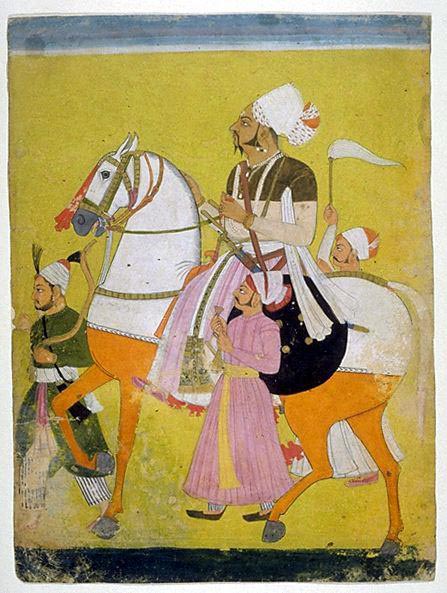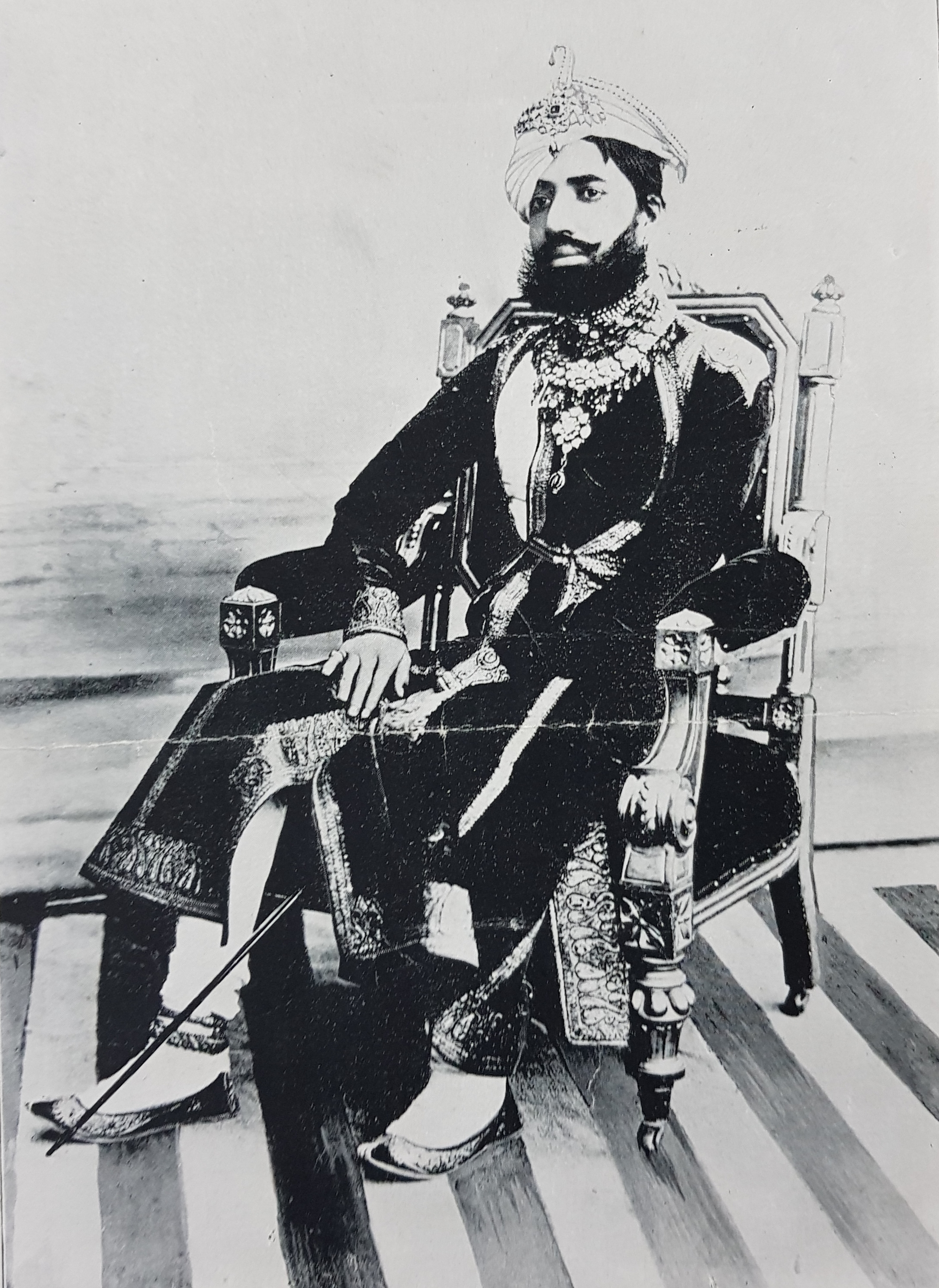|
Ratlam State
Ratlam State was a 13 gun salute (15 local) princely state in India, part of the Malwa Agency of Central India during the British Raj. The state's capital was Ratlam town in modern Ratlam district of Madhya Pradesh. Ratlam State was originally a prosperous kingdom, its parganas included Dharad (Ratlam), Raoti, Dhamnod, Badnawar, Dagparawa, Alot, Titrod, Kotri, Gadgucha, Agar, Nahargarh, Kanar, Bhilara and Ramgharia yielding a revenue of Rs.53,00,000 in the 17th century. Maharaja Ratan Singh Rathore of Ratlam supported Dara Shukoh during the Mughal succession war. However Dara Shukoh lost and Ratan Singh was killed in battle. The new emperor Aurangzeb annexed Ratlam and reduced the state to a great extent. The state further lost land to the Scindias of Gwalior. During British rule in 1901 the state had an area of 1795 km2 and an estimated revenue of Rs.8,00,000. History Early history The rulers of Ratlam were originally princes and Jagirdars (nobles) of Marwar. Dalpa ... [...More Info...] [...Related Items...] OR: [Wikipedia] [Google] [Baidu] |
British India
The provinces of India, earlier presidencies of British India and still earlier, presidency towns, were the administrative divisions of British governance on the Indian subcontinent. Collectively, they have been called British India. In one form or another, they existed between 1612 and 1947, conventionally divided into three historical periods: *Between 1612 and 1757 the East India Company set up factories (trading posts) in several locations, mostly in coastal India, with the consent of the Mughal emperors, Maratha Empire or local rulers. Its rivals were the merchant trading companies of Portugal, Denmark, the Netherlands, and France. By the mid-18th century, three ''presidency towns'': Madras, Bombay and Calcutta, had grown in size. *During the period of Company rule in India (1757–1858), the company gradually acquired sovereignty over large parts of India, now called "presidencies". However, it also increasingly came under British government oversight, in effect shar ... [...More Info...] [...Related Items...] OR: [Wikipedia] [Google] [Baidu] |
Scindia
The Scindia dynasty (anglicized from Shinde) is a Hindu Maratha dynasty of maratha origin that ruled the erstwhile State of Gwalior. It had the Patil-ship of Kumberkerrab in Wai. It was founded by Ranoji Scindia, who started as a personal servant of the Peshwa Bajirao I. Ranoji and his descendents along with their rivals the Holkars, played a leading role during the Maratha ascendency in North india during the 18th century. The Gwalior state was a princely state under the British Raj during the 19th and the 20th centuries. After India's independence in 1947, several members of the Scindia family went on to enter Indian politics. Foundation The Scindia dynasty was founded by Ranoji Scindia, a personal servant of Bajirao I Peshwa. Ranoji prospered early under Bajirao because of the favorable circumstances created by the appointment of Bajirao as the Peshwa at the age of twenty.This had evoked jealousy from senior officials like Anant Ram Sumant, Shripatrao Pant Pratinidhi, ... [...More Info...] [...Related Items...] OR: [Wikipedia] [Google] [Baidu] |
Dominion Of India
The Dominion of India, officially the Union of India,* Quote: “The first collective use (of the word "dominion") occurred at the Colonial Conference (April to May 1907) when the title was conferred upon Canada and Australia. New Zealand and Newfoundland were afforded the designation in September of that same year, followed by South Africa in 1910. These were the only British possessions recognized as Dominions at the outbreak of war. In 1922, the Irish Free State was given Dominion status, followed by the short-lived inclusion of India and Pakistan in 1947 (although India was officially recognized as the Union of India). The Union of India became the Republic of India in 1950, while the became the Islamic Republic of Pakistan in 1956.” was an independent dominion in the British Commonwealth of Nations existing between 15 August 1947 and 26 January 1950. Until its independence, India had been ruled as an informal empire by the United Kingdom. The empire, also called the Britis ... [...More Info...] [...Related Items...] OR: [Wikipedia] [Google] [Baidu] |
Opium
Opium (or poppy tears, scientific name: ''Lachryma papaveris'') is dried latex obtained from the seed capsules of the opium poppy '' Papaver somniferum''. Approximately 12 percent of opium is made up of the analgesic alkaloid morphine, which is processed chemically to produce heroin and other synthetic opioids for medicinal use and for the illegal drug trade. The latex also contains the closely related opiates codeine and thebaine, and non-analgesic alkaloids such as papaverine and noscapine. The traditional, labor-intensive method of obtaining the latex is to scratch ("score") the immature seed pods (fruits) by hand; the latex leaks out and dries to a sticky yellowish residue that is later scraped off and dehydrated. The word '' meconium'' (derived from the Greek for "opium-like", but now used to refer to newborn stools) historically referred to related, weaker preparations made from other parts of the opium poppy or different species of poppies. The production methods h ... [...More Info...] [...Related Items...] OR: [Wikipedia] [Google] [Baidu] |
Daulat Rao Scindia
Shrimant Daulat Rao Shinde (also Sindhia; 1779 – 21 March 1827) was the Maharaja (ruler) of Gwalior state in central India from 1794 until his death in 1827. His reign coincided with struggles for supremacy within the Maratha Empire, and wars with the expanding East India Company. Daulatrao played a significant role in the Second and Third Anglo-Maratha wars. Ascent of Scindias Daulatrao was a member of the Sindhia dynasty, and succeeded to the Gwalior throne on 12 February 1794 at the age of 15, upon the death of Maharaja Mahadji Shinde (Mahadji left no heir, and Daulatrao was a grandson of his elder brother Tukoji Rao Scindia, who was killed in the Third Battle of Panipat, 7 January 1761). Daulatrao was recognised and formally installed by the Satara Chhatrapati and Peshwa, 3 March 1794, and conferred the titles of Naib Vakil-i-Mutlaq (Deputy Regent of the Empire), Amir-al-Umara (Head of the Amirs) from Emperor Shah Alam II on 10 May 1794. Gwalior state was part of th ... [...More Info...] [...Related Items...] OR: [Wikipedia] [Google] [Baidu] |
Gwalior State
Gwalior state was a semi-autonomous Maratha state. It was centred in modern-day Madhya Pradesh, arising due to the rise of the Maratha Empire and fragmentation of the Mughal Empire. It was ruled by the House of Scindia (anglicized from Shinde), a Hindu Maratha dynasty, and was entitled to a 21- gun salute when it became a princely state of the India. The state took its name from the old town of Gwalior, which, although not its first capital, was an important place because of its strategic location and the strength of its fort; it became later its capital, after Daulat Rao Sindhia built its palace in the village of Lashkar, near the fort. The state was founded in the early 18th century by Ranoji Sindhia, as part of the Maratha Confederacy. The administration of Ujjain was assigned by Peshwa Bajirao I to his faithful commander Ranoji Shinde and his Sarsenapati was Yasaji Rambhaji (Rege). The Diwan of Ranoji Shinde (Scindia) was Ramchandra Baba Shenvi who was very wealthy; ... [...More Info...] [...Related Items...] OR: [Wikipedia] [Google] [Baidu] |
Sailana State
Sailana State was an 11 gun salute princely state in India, part of the Malwa Agency of Central India during the British Raj. The state enjoyed an estimated revenue of Rs.5,00,000. History Sailana State was founded by Raja Jai Singh, great-grandson of Maharaja Ratan Singh, founder of Ratlam State. It is a branch of the Rathore house. In 1716 Jai singh took revenge against his uncle for the murder of his father, he killed him in a pitched battle at sagode and secured Ratlam for his elder brother. The two brothers then divided the state between themselves. Jai singh's capital was initially at Raoti. He built Sailana as his new capital in 1736. During this period the Maratha influence in central India had been growing and several states had been annexed or forced to pay heavy tributes to the Peshwa. However Jai singh had the wisdom to form alliances with the Maratha officials, he helped the Peshwa agent Ambaji Pant Trimbak Purandare to collect tribute in Malwa and used the s ... [...More Info...] [...Related Items...] OR: [Wikipedia] [Google] [Baidu] |
Sitamau State
Sitamau State was a princely state of the British Raj before 1947. Its capital was in Sitamau town, Mandsaur district, Madhya Pradesh. The total area of the state was 350 square miles. The average revenue of the state was Rs.130,000. History Ratan Singh Rathore was killed in the battle of Dharmat, after which his descendants continued to rule Ratlam. During Raja Keshodas's reign some soldiers of the Raja killed the Jaziya tax collectors due to which the Mughals completely annexed Ratlam. Keshodas stuck to imperial service during this time and on 3rd September 1699, he was made the faujdar of Nalgunda. Due to his good governance, Aurangzeb later granted Keshodas the Pargana of Titrod from which Raja Keshodas founded Sitamau State on 31st October 1701. The State of Ratlam was restored to an uncle of Keshodas called Chattrasal in 1705. In 1714 the emperor Farrukhsiyar further added the paragana of Alot to the new state. Sitamau faced invasions after the decline of the Mughal Empi ... [...More Info...] [...Related Items...] OR: [Wikipedia] [Google] [Baidu] |
Muhammad Azam Shah
Qutb-ud-Din Muhammad Azam (28 June 1653 – 20 June 1707), commonly known as Azam Shah, was briefly the Mughal emperor who reigned from 14 March 1707 to 20 June 1707. He was the third son of the sixth Mughal emperor Aurangzeb and his chief consort Dilras Banu Begum. Azam was appointed as the heir-apparent (''Shahi Ali Jah'') to his father on 12 August 1681 and retained that position until Aurangzeb's death. During his long military career, he served as the viceroy of Berar Subah, Malwa, Bengal, Gujarat and the Deccan. Azam ascended the Mughal throne in Ahmednagar upon the death of his father on 14 March 1707. However, he and his three sons, Bidar Bakht, Jawan Bakht and Sikandar Shan, were later defeated and killed by Azam Shah's older half-brother, Shah Alam (later crowned as Bahadur Shah I), during the Battle of Jajau on 20 June 1707. Early life Birth Qutb-ud-Din Muhammad Azam was born on 28 June 1653 in Burhanpur to Prince Muhi-ud-Din (later known as 'Aurangzeb' upon his ... [...More Info...] [...Related Items...] OR: [Wikipedia] [Google] [Baidu] |







